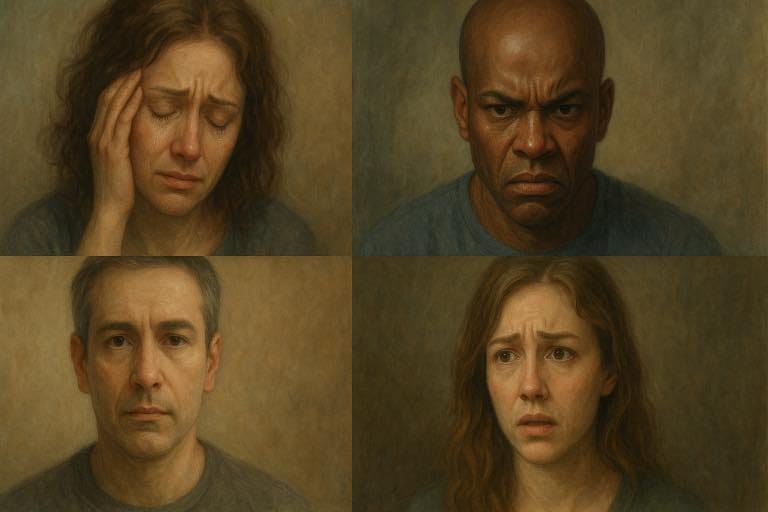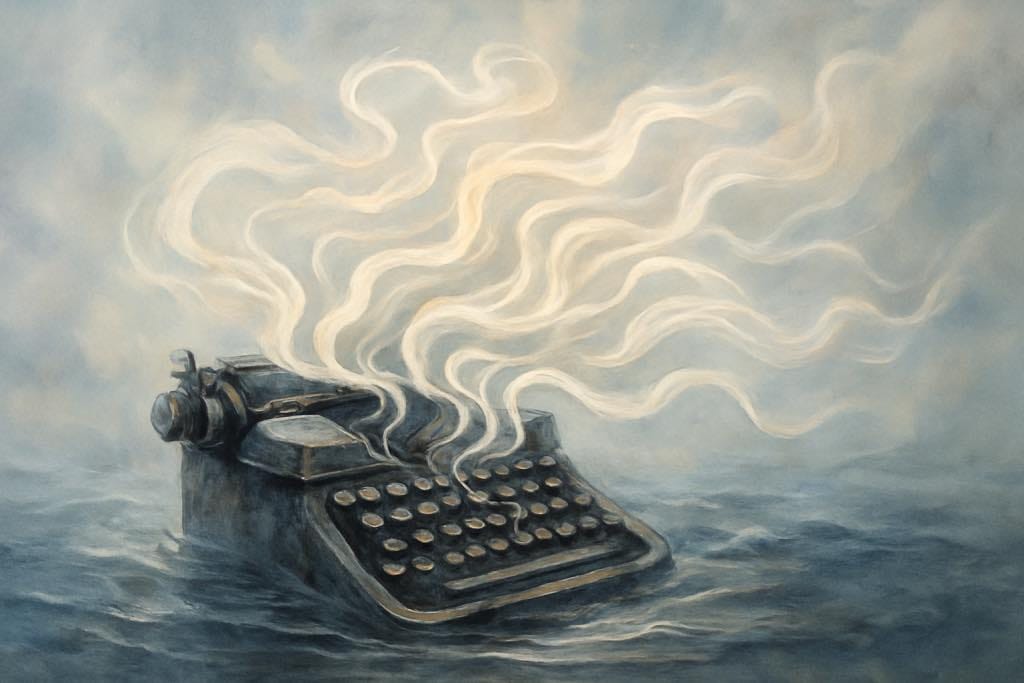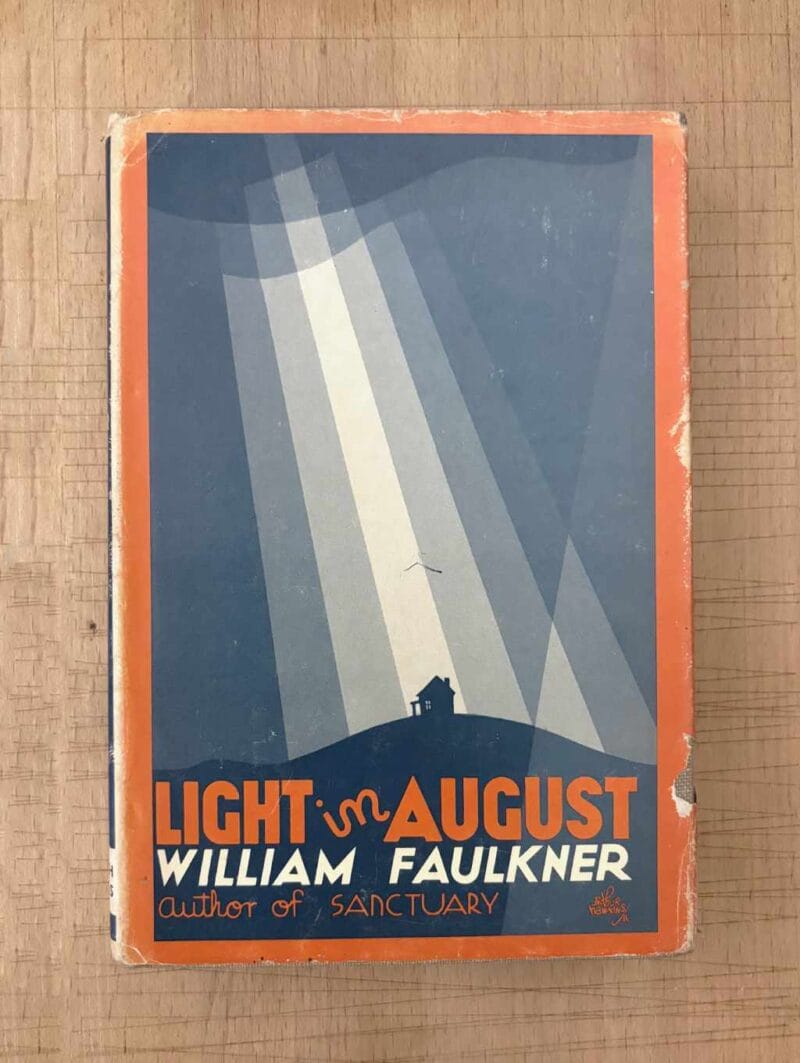- Why Joan Didion’s Prose Style Works in The Year of Magical Thinking
In The Year of Magical Thinking (2005), Joan Didion forges a prose style that is at once meticulous and restrained, perfectly attuned to narrating the surreal experience of grief. Its language throughout is cool, clear, and precise, a controlled voice that reflects the author’s shocked numbness while documenting personal tragedy. By dissecting her emotions with journalistic detachment and looping back through memories with almost liturgical repetition, Didion manages to both describe and enact the mental patterns of grief on the page.
This stylistic approach differs in intriguing ways from her earlier writings and other grief memoirs, yet it feels like the culmination of techniques she has honed throughout her career. Below, we explore why Didion’s prose works so powerfully in Magical Thinking and how it compares to her voice in her other works like Blue Nights, Slouching Towards Bethlehem, and Play It As It Lays, as well as to fellow literary grief narratives by C.S. Lewis and Max Porter.
Steely Precision and Formal Restraint in Magical Thinking
Joan Didion’s prose has always carried a distinctive cadence: spare, deliberate, edged with clarity that cuts rather than elaborates. In Magical Thinking, this style does not merely recount the experience of grief—it reenacts it. The writing feels skeletal, stripped of excess, and haunted by refrains that return with unnerving precision. By keeping emotion in check, Didion recounts events with an exactness that conveys shock without collapsing into sentiment.
The prose remains grounded when describing the night John Gregory Dunne suddenly collapsed of a heart attack at dinner. “Life changes fast. Life changes in the instant. You sit down to dinner and life as you know it ends,” she writes flatly on the very first page. Such matter-of-fact sentences carry a heavy weight of shock precisely because they are so unadorned.
Precision as Composure, Style as Survival
This restrained style has its roots in Didion’s background as a journalist and essayist. Much as in her classic essays from Slouching Towards Bethlehem (1968), Didion’s writing here favors economy and clarity over florid emotion. Critics have long remarked on her precision and detachment, which some viewed as illuminating, others as cold. In Magical Thinking, that precision takes on new weight: she catalogs medical facts, dates, and the logistical minutiae of hospital visits and funerals with a composure that reads less as distance than as survival instinct.
Indeed, Didion’s diction is exact and unsparing. When she does choose a striking adjective or image, it cuts to the bone. Such rhetorical precision keeps the writing sharply focused even as her world is reeling. The overall tone maintains a decorum that many readers find respectful and bracing: by being clear-eyed and analytical about death, Didion avoids the sentimental platitudes and wildly emotional, confessional writing common in lesser grief memoirs.
Yet, Didion’s control occasionally falters—intentionally so—to let the raw anguish seep through the cracks. As the narrative progresses, she allows brief moments of breakdown: “I wanted to scream,” she admits in one of her journal entries, “I wanted him back.” Such outbursts are rare and all the more powerful amid the prevailing composure.
In scenes of reflection, especially when reading psychiatric literature on grief or revisiting tender memories of her husband, Didion’s cool facade gives way to flashes of rage, confusion, or longing. Notably, her emotional peaks often occur not in the immediate descriptions of John’s death, but later—triggered by seemingly minor details or scholarly accounts.
When Restraint Becomes Revelation
This inversion (staying calm in crisis, cracking during analysis) defies the typical memoir trajectory, and it prompted some commentators to brand Didion a cold, overly intellectual, emotionally disengaged writer. Others, however, praise this very quality as clear-eyed courage, noting that Didion’s refusal to indulge in hysteria gives the book a haunting, dignified power.
By the end, her measured voice paradoxically intensifies the emotional weight. Beneath the surface calm, a current of sorrow surges. It’s a technique long present in her work: restraint not as avoidance, but as revelation. In Magical Thinking, that restraint becomes a mode of witness—one that shows how grief can make you feel like a spectator in your own life, going through motions as your inner world unravels.
Recursive Phrasing: Repetition, Rhythm, and the Shape of Grief

One of the most distinctive stylistic features of Didion’s memoir is her use of repetition and recursive phrasing. Key sentences and questions recur throughout the text, creating a refrain-like rhythm that mirrors the looping mental patterns of bereavement. For example, the stark lines that open the book reappear verbatim later in the narrative, in Chapter 6. By circling back to this refrain, Didion formally reproduces the circularity of grief: the mind continually returns to the moment of impact, trying to comprehend the incomprehensible.
The memoir is composed of varied narrative elements—journal entries, medical details, memories, and reflections—woven together by repeated phrases that create cohesion. These refrains lend the work a subtle structure: each recurrence signals a return to an earlier thought, enabling Didion to re-express or reexamine it from a different angle. The effect is almost musical—motifs resurfacing like themes in a composition, reinforcing the emotional tone without relying on linear progression.
Repetition as Anchor
Didion employs this device with particular phrases that carry emotional weight. She repeats the gentle assurance, “You’re safe. I’m here” twice: once in a memory of comforting her unconscious daughter in the ICU, and again near the memoir’s end. In both cases, the phrase serves as a touchstone that anchors Didion (and the reader) to a moment of fragile hope amid chaos.
Likewise, she uses anaphora (the repetition of opening words) to convey persistence and insistence. When grappling with the need to let her husband truly stay dead, Didion writes: “Let them become the photograph on the table. / Let them become the name on the trust accounts. / Let go of them in the water.”
Rhetorical Questions and Uncertainty
Another hallmark of Didion’s style here is her strategic use of rhetorical questions. Throughout Magical Thinking, she poses unanswerable questions to herself: “How could I go back to Paris without him, how could I go back to Milan…?” she wonders, listing the shared places she now cannot bear to revisit. We as readers find ourselves silently attempting to answer these questions or at least feeling their weight. The very act of asking draws us into communion with Didion’s experience.
In this way, her recursive phrasing—the repeated lines, the cyclical returns, the self-directed questions—does more than just stylize the text; it mimics the cognitive loops of bereavement (the what-ifs, the whys, the constant replay of events) and thus makes the memoir’s portrayal of grief profoundly authentic.
Fragmented Structure: Order and Chaos in the Narrative

Hand in hand with Didion’s repetitive phrasing is her use of a fragmented, nonlinear structure to represent the disarray of grief. The book is not arranged as a simple chronological diary of the year after John’s death; instead, it moves fluidly back and forth in time—from the night of December 30, 2003 (when John died), to recollections of the couple’s earlier years, to the ongoing medical crises of their daughter Quintana, and to Didion’s present-tense research into mourning.
The structure of the book resists linear progression by threading together memories, observations, and sudden recollections without smoothing the edges between them. The result is a fragmented, elliptical narrative that mirrors the psychological disruption Didion is living through. For instance, scenes from across four decades of marriage sit alongside precise timelines of hospital visits or the surreal disorientation of administrative paperwork following death.
Making Sense of Fragments
Didion references T.S. Eliot’s “These fragments I have shored against my ruins,” and the phrase becomes more than a citation—it becomes a structural guidepost. By shaping those fragments into prose, Didion preserves the dignity of disarray rather than imposing artificial coherence.
This stylistic choice challenges the expectation that memoir should build toward resolution. With fragmentary form, Didion acknowledges that grief upends narrative: life no longer proceeds in a neat, logical sequence, so how could a memoir of grief do so? Despite its disjointed nature, the book is artfully held together by Didion’s voice and motifs. Like a spiral, we circle through similar points, each time at a slightly different elevation of understanding.
Weaving the Personal and the Referential
Didion further complicates the structure by integrating research and cultural texts into her personal narrative. One paragraph might detail ICU procedures; the next, a recollection of John in the kitchen. She quotes from psychiatric manuals, etiquette guides, and literary works—Emily Post, C.S. Lewis, Thomas Mann—not as digressions, but as echoes. Remarkably, she weaves these references in without breaking the narrative spell.
Earlier Experiments with Fragmentation
This mode of fragmentation is not new in Didion’s work. Her 1970 novel Play It As It Lays employed short, episodic chapters that drifted through an emotionally fractured protagonist’s life. In that book, form mirrors psychological breakdown. In Magical Thinking, Didion returns to the technique but turns it inward and nonfictional. Abrupt breaks in thought, sudden changes in tone, or memories resumed pages later all reflect the nonlinearity of mourning.
But there is a key difference: unlike Maria in Play It As It Lays, Didion does attempt to find order. Her voice, even in disarray, shows a journalist’s instinct to document, to trace patterns. The memoir gradually traces a progression as Didion slowly accepts reality and begins to imagine a future without her husband. These fragments start to cohere in form by the final chapter.
Didion’s Evolving Voice: From Slouching Towards Bethlehem and Play It As It Lays to Magical Thinking

While Magical Thinking stands as a singular memoir, its stylistic DNA can be traced back to Didion’s earlier works. She first made her name with incisive essays (Slouching Towards Bethlehem, 1968; The White Album, 1979) and lean novels (Play It As It Lays, 1970). Across these, certain trademarks emerged: a sparse, unadorned prose style; keen powers of observation; an often detached, ironic tone; and a fascination with disorder beneath the surface of things.
In Slouching Towards Bethlehem, for example, Didion reported on the counterculture of 1960s California with cool understatement, letting chaotic scenes of Haight-Ashbury drug users speak for themselves in plain, cutting sentences. Commentators noted that her voice in those essays—the laconic, “cool customer” narrator who sees clearly even as the center fails to hold—was itself an invention, an “authorial persona” that readers found mesmerizing.
That same sensibility carried over to her fiction. Play It As It Lays unfolds in a tone of hard-boiled despair, rendered in prose so stripped and unvarnished that the tragedy beneath it feels all the more jarring. The novel’s unhappy heroine drives the freeways of Los Angeles in a numb search for meaning, and Didion’s ruthless, stripped-down narration perfectly embodies that emptiness.
Turning Inward: A New Kind of Collapse
What happens, then, when this consummate stylist of American disillusionment turns her gaze inward on her most personal tragedy? Magical Thinking is, in a sense, Didion’s own world falling apart, a theme she had long explored externally. The difference is the intimacy of subject. Didion’s previous works often maintained a cool reserve—Slouching’s reportage or Play It’s third-person remove—whereas Magical Thinking is unflinchingly first-person and deeply confessional in content (if not in tone). The memoir thus represents a pivot: Didion turns her hyper-focused lens to something she had previously withheld: herself.
The result is both familiar and new. Stylistically, Magical Thinking retains the signatures of Didion’s voice—spare phrasing, exact diction, emotional reserve. The prose is clipped and skeletal, its precision a holdover from her journalistic roots. The influence of Hemingway still lingers in her compressed sentences and concrete images; she once described his writing as “lean, hard, athletic,” and her own style, often called a more cerebral or “feminine” variation, carries that same muscular economy. Yet here, the tight control feels less like a technique and more like a survival mechanism.
Prose Under Pressure
However, Magical Thinking also sharpens some methods beyond what we saw in Didion’s past work. The use of repetition and circular structure, for example, is far more pronounced here than in her earlier essays or novels. While Didion always wrote with a certain rhythm, the almost mantra-like refrains in Magical Thinking (“Why did I keep his shoes? He will need shoes,” etc.) are tailored to mimic a mind under extreme duress—a stylistic choice less applicable in her youthful writings.
We also see her penchant for incisive imagery: just as Play It As It Lays recurred the image of snakes and barren highways to symbolize nihilism, Magical Thinking fixates on concrete details like shoes (John’s that she cannot give away) to symbolize her irrational hope and sense of denial. And Didion’s voice remains unmistakably her own.
Her tone, too, while still cool, carries a new fragility. In Slouching Towards Bethlehem, Didion’s narrator could seem effortlessly composed amid chaos; in Magical Thinking, that composure is something of a lifeline, masking a vulnerability that she periodically lays bare. This shift becomes even more evident in her follow-up memoir, Blue Nights (2011), where Didion writes about the death of her daughter Quintana and her own aging.
A Style That Changes with Age
Blue Nights is often regarded as a kind of darker twin to Magical Thinking, and it pushes Didion’s style to an extreme of spareness and repetition. The book is even more fragmented and self-questioning, where Didion’s once-cool voice quavers with overt fear—fear of time passing, of memory failing, of losing everything. The stylistic continuity with Magical Thinking is clear (the fragmentary form, the recurrences), but in Blue Nights the technique becomes more raw and at times more chaotic, reflecting Didion’s waning strength and increased vulnerability.
If Magical Thinking turned personal chaos into a semblance of order, Blue Nights hints at an author struggling to impose order at all. This contrast actually highlights what a feat Magical Thinking was. In 2005, Didion was still able to marshal her formidable writerly discipline to transform a universal, yet deeply personal, experience into a coherent, resonant narrative. In essence, Magical Thinking consolidated Didion’s reputation as one of America’s greatest first-person writers, elevating the grief memoir to the level of literature.
Different Voices of Grief: C. S. Lewis and Max Porter

Placing Didion’s memoir in the context of other famous grief narratives can further illuminate her unique prose style. Two insightful comparisons are C.S. Lewis’s A Grief Observed (1961) and Max Porter’s Grief Is the Thing with Feathers (2015), which represent very different approaches to writing about loss.
C. S. Lewis’s A Grief Observed
Lewis’s A Grief Observed is, like Didion’s book, a first-person account of bereavement written soon after the fact. However, Lewis’s style is markedly more raw and unfiltered. The book is essentially a collection of journal entries he penned in the months after his wife’s death, and it reads as such: intimate, ragged, and unpolished (though Lewis’s intellect and literary flair still shine through).
Indeed, Lewis famously questions his faith in God throughout the text, at one point doubting whether God might be a “Cosmic Sadist” inflicting pain. The tone of A Grief Observed is anguished and confessional; Lewis holds nothing back of his anger, despair, or confusion. Stylistically, it lacks the kind of deliberate structure Didion employs—it’s closer to a raw diary, complete with contradictions and evolving thoughts, which gives it an immediacy and emotional intensity.
Didion’s Magical Thinking, in contrast, is a consciously crafted literary work. Where Lewis pours his heart out in uncensored exclamations (at one point writing, “No one ever told me grief felt so like fear”), Didion keeps her emotional exclamations sparse and tightly woven into a larger reflective framework. Both writers intellectualize their grief to an extent—Lewis engages in theological arguments with himself, while Didion consults medical and psychological literature—but the voice differs. Didion’s voice is that of a precisionist carefully choosing each word even while in pain, whereas Lewis’s voice feels like that of a man writing to save his own life, grasping at any thought or metaphor that might make sense of suffering. Neither approach is “better”; they simply illustrate how distinct prose styles can convey profound loss.
Didion’s memoir stands out for achieving a kind of elegant remove that nonetheless lets the reader in. In fact, Didion explicitly references Lewis in Magical Thinking as one of the scant few predecessors in grief literature, implicitly positioning her book in dialogue with his. We might say Lewis’s narrative rages toward faith, full of Biblical echoes and cries of the heart, whereas Didion’s narrative circles in cool contemplation, capturing the clinical surrealism of modern hospital grief. Each finds universality: Lewis in his frank humanity, Didion in her crafted clarity.
Max Porter’s Grief Is the Thing with Feathers
On the other end of the spectrum is Max Porter’s Grief Is the Thing with Feathers, a contemporary work that is neither memoir nor traditional novel, but rather a short experimental piece blending poetry, fable, and prose. Porter’s book is about a husband and two young boys mourning the sudden death of the wife/mother, and it introduces a literal Crow that comes to live with the family—a manifestation of grief inspired by the poet Ted Hughes.
Stylistically, Grief Is the Thing with Feathers could not be more different from Didion’s classicism. Porter writes in fragments, yes, but his fragments are often abstract, typographically playful, and allegorical. The book shifts perspectives (some sections are narrated by “Dad,” others by “Crow,” others by the boys) and shifts forms (some passages are verse, some stream-of-consciousness). If Didion’s prose is restrained, Porter’s is deliberately unrestrained.
The tone of Porter’s work is whimsical and surreal at times (the Crow speaks in riddles and nonsense occasionally), yet also visceral and childlike at others. This experimental approach captures the chaos and creativity of grief’s emotional landscape in a way that is almost the polar opposite of Didion’s method. Didion uses no whimsical conceits; she stays firmly grounded in reality, tracking the mundane details of hospital bills and funeral arrangements. Where Porter’s narrative might have a talking bird flap through a paragraph, Didion’s would have a cold coroner’s report or a line from a medical textbook.
One could say Porter externalizes grief into myth—making it a character (the Crow)—whereas Didion internalizes grief into meticulously rendered thought patterns. For the reader, Porter’s style can feel like being inside a chaotic dream or poem, whereas Didion’s feels like reading the stoic but cracking journal of a friend. Both are powerful in their own ways. And interestingly, both authors achieve a kind of catharsis through form: Porter’s seemingly “frail” assemblage of words ultimately coalesces into a robust emotional journey, and Didion’s controlled narrative ultimately delivers a gut punch precisely by underplaying it.
How Style Transforms Grief
In comparing these three, we see how prose style shapes the experience of a grief narrative. Didion’s contribution, as many have pointed out, was to demonstrate that restraint and reportorial clarity can be as evocative of sorrow as raw confession or poetic flights of fancy. She shows that writing about mourning need not follow a preset script of emotional breakdown and recovery; it can be introspective, skeptical of facile comfort, formally experimental (in a quiet way), and intellectually rich.
And yet, for all her uniqueness, Didion achieves the same goal as Lewis and Porter: to make the reader feel and understand something of that “place none of us know until we reach it”—grief. Her rhetorical precision, formal restraint, and recursive phrasing are simply the tools she uses to map that dark terrain. For many, those tools succeeded brilliantly.
###
Didion’s style in Magical Thinking is a study in contrasts—at once cool and passionate, spare and profound, detached and deeply intimate. By leveraging her trademark precision of language, tight control of form, and hypnotic use of repetition, she created a memoir that embodies grief’s contradictions. This prose style works so well because grief itself is often a collision of opposites: numbness and pain, chaos and routine, memory and disorientation. Didion found a way to mirror that state on the page.
In doing so, she departed from some conventions of her earlier writings—pushing fragmentation and personal exposure further—even as she sharpened the fundamental methods (clear-eyed observation, rhythmic cadence, meticulous detail) that had always defined her voice. The comparisons to Blue Nights, Slouching Towards Bethlehem, and Play It As It Lays highlight a writer evolving yet recognizably consistent, always honing the balance between personal voice and formal discipline.
And the juxtapositions with Lewis and Porter underscore just how singular Didion’s achievement is: without mythic crows or overt lamentation, she crafted a grief narrative that is piercingly authentic and universally relatable. Ultimately, this book succeeds because Didion’s rhetorical restraint and recursive, precise prose empower readers not just to read about her grief but to inhabit it.
Further Reading
What was Joan Didion’s prose style, and why do we not see a similar style today? on Quora




